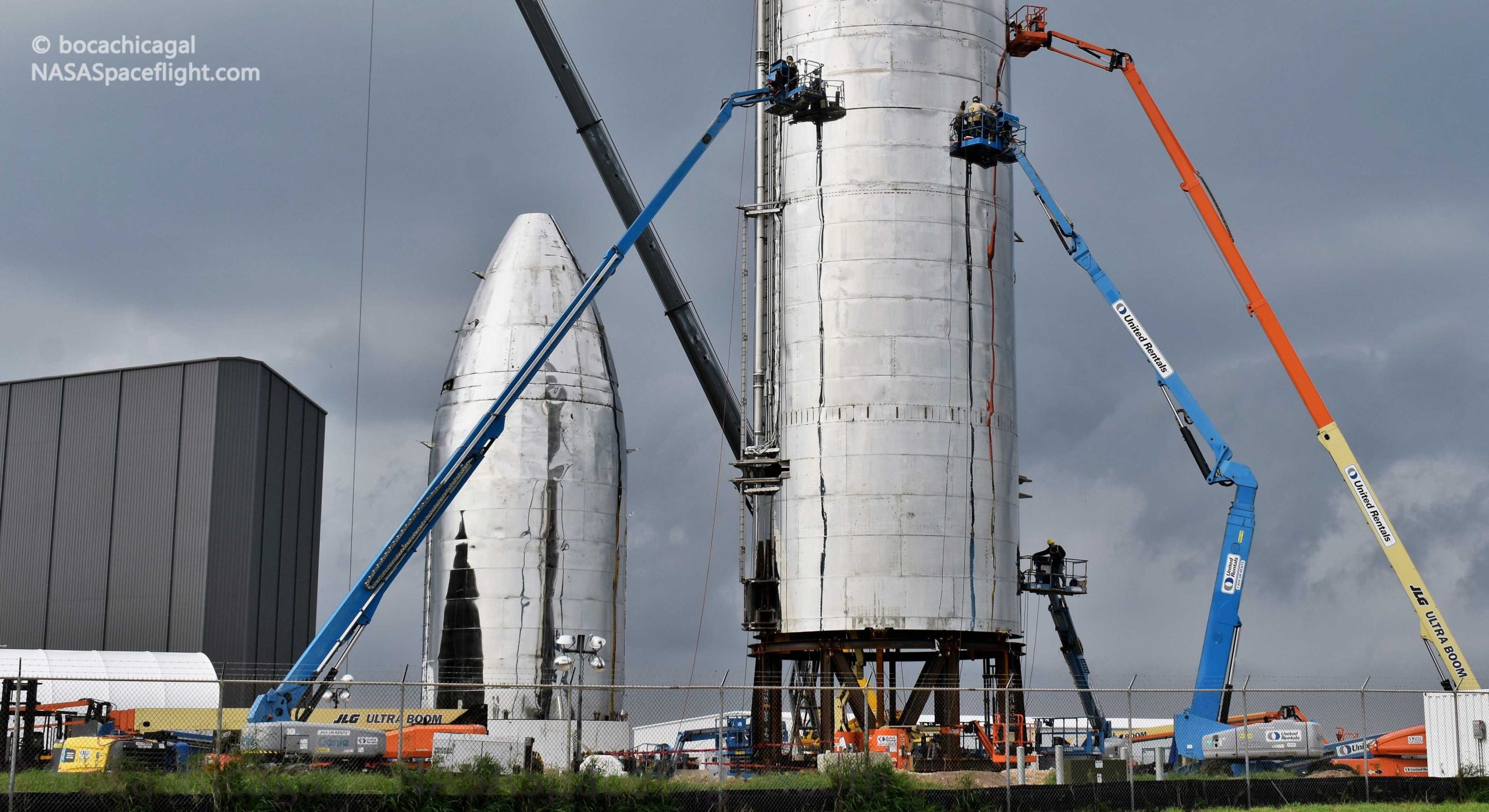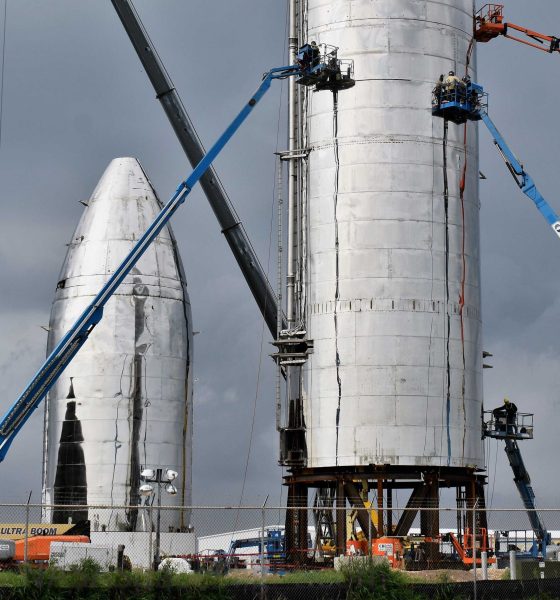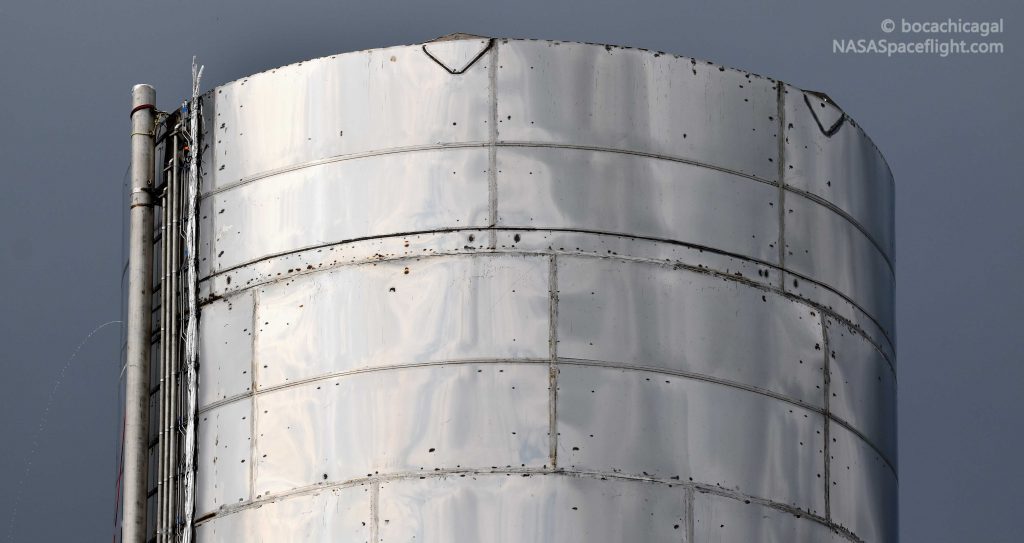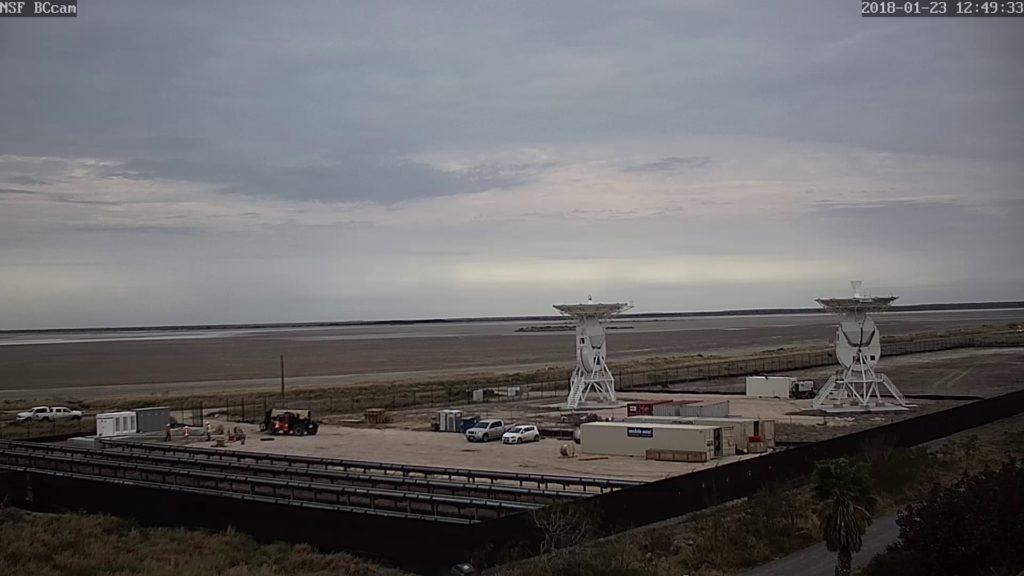

News
Tesla Energy backup helps SpaceX Starship Mk1 face down tornadoes, power outages
SpaceX’s South Texas Starship facilities and Mk1 prototype fell under threat of damage when stormy weather – including multiple tornadoes and heavy rain – impacted the area in the early hours of October 21st.
With a healthy serving of luck, SpaceX’s Boca Chica campus managed to escape largely unscathed, but much of the surrounding area lost power after high winds knocked down numerous utility poles. Thankfully, one of the first things SpaceX installed in Boca Chica, Texas was a large Tesla solar array and multiple Tesla Powerpacks.
Sometime around 3am local time on October 21st, South Padre Island and Boca Chica, Texas were hit by a significant thunderstorm, delivering high winds and heavy rain throughout the region. This is far from unusual for any and all of the coastal areas lining the Gulf of Mexico, but it’s the first (relatively) severe weather to hit SpaceX’s Starship build site in at least a month or two.
LabPadre and SPadre livestreams of SpaceX’s build site went down shortly after the storm kicked up and local commenters suggested that conditions had abruptly soured, raising some mild concerns about the wellbeing of locals in Boca Chica Village, as well as Starship Mk1 itself. The streams likely went down as a result of power outages caused by wind damage to powerlines in the area, but it appears that most of those outages were rectified within a day or so. LabPadre’s stream remains down but SPadre’s is back up and serving excellent live views of stormy weather and thunderclaps.
Perhaps most notably, local weather radar readings indicated that two tornadoes touched down perhaps just a mile or less away from Starship Mk1 shortly after the storm kicked off, raising concerns that SpaceX’s build site could have suffered a direct impact (or two). Thankfully, by all outward appearances, SpaceX’s Starship facility made it through the storm unscathed. Parts of the site experienced significant flooding but things were otherwise unharmed and SpaceX immediately restarted work on Starship Mk1 as soon as the storm died down.
Just a few hours prior to the storm’s arrival, technicians were installing the first heavy-duty leg mounts on Starship Mk1 and that work continued the moment the wind and rain died down.

Weathered residents of Boca Chica Village – located a stone’s throw away from SpaceX’s build site – were largely unphased by the mild storm and the Village itself (and thus SpaceX, too) may have only briefly lost power. Still, an unstable power supply is utterly unacceptable and dysfunctional for a large-scale industrial manufacturing site like SpaceX’s Starship facilities.
Thankfully, SpaceX’s South Texas presence includes a substantial solar array and Tesla Powerpack installation, likely capable of powering the company’s Starship build site and communications antennas for hours in the event of a serious power outage. More likely than not, that local grid backup likely came in handy last night, either augmenting or fully supplanting power from the grid at some point.

Check out Teslarati’s Marketplace! We offer Tesla accessories, including for the Tesla Cybertruck and Tesla Model 3.

News
Tesla FSD fleet is nearing 7 billion total miles, including 2.5 billion city miles
As can be seen on Tesla’s official FSD webpage, vehicles equipped with the system have now navigated over 6.99 billion miles.

Tesla’s Full Self-Driving (Supervised) fleet is closing in on almost 7 billion total miles driven, as per data posted by the company on its official FSD webpage.
These figures hint at the massive scale of data fueling Tesla’s rapid FSD improvements, which have been quite notable as of late.
FSD mileage milestones
As can be seen on Tesla’s official FSD webpage, vehicles equipped with the system have now navigated over 6.99 billion miles. Tesla owner and avid FSD tester Whole Mars Catalog also shared a screenshot indicating that from the nearly 7 billion miles traveled by the FSD fleet, more than 2.5 billion miles were driven inside cities.
City miles are particularly valuable for complex urban scenarios like unprotected turns, pedestrian interactions, and traffic lights. This is also the difference-maker for FSD, as only complex solutions, such as Waymo’s self-driving taxis, operate similarly on inner-city streets. And even then, incidents such as the San Francisco blackouts have proven challenging for sensor-rich vehicles like Waymos.
Tesla’s data edge
Tesla has a number of advantages in the autonomous vehicle sector, one of which is the size of its fleet and the number of vehicles training FSD on real-world roads. Tesla’s nearly 7 billion FSD miles then allow the company to roll out updates that make its vehicles behave like they are being driven by experienced drivers, even if they are operating on their own.
So notable are Tesla’s improvements to FSD that NVIDIA Director of Robotics Jim Fan, after experiencing FSD v14, noted that the system is the first AI that passes what he described as a “Physical Turing Test.”
“Despite knowing exactly how robot learning works, I still find it magical watching the steering wheel turn by itself. First it feels surreal, next it becomes routine. Then, like the smartphone, taking it away actively hurts. This is how humanity gets rewired and glued to god-like technologies,” Fan wrote in a post on X.
News
Tesla starts showing how FSD will change lives in Europe
Local officials tested the system on narrow country roads and were impressed by FSD’s smooth, human-like driving, with some calling the service a game-changer for everyday life in areas that are far from urban centers.

Tesla has launched Europe’s first public shuttle service using Full Self-Driving (Supervised) in the rural Eifelkreis Bitburg-Prüm region of Germany, demonstrating how the technology can restore independence and mobility for people who struggle with limited transport options.
Local officials tested the system on narrow country roads and were impressed by FSD’s smooth, human-like driving, with some calling the service a game-changer for everyday life in areas that are far from urban centers.
Officials see real impact on rural residents
Arzfeld Mayor Johannes Kuhl and District Administrator Andreas Kruppert personally tested the Tesla shuttle service. This allowed them to see just how well FSD navigated winding lanes and rural roads confidently. Kruppert said, “Autonomous driving sounds like science fiction to many, but we simply see here that it works totally well in rural regions too.” Kuhl, for his part, also noted that FSD “feels like a very experienced driver.”
The pilot complements the area’s “Citizen Bus” program, which provides on-demand rides for elderly residents who can no longer drive themselves. Tesla Europe shared a video of a demonstration of the service, highlighting how FSD gives people their freedom back, even in places where public transport is not as prevalent.
What the Ministry for Economic Affairs and Transport says
Rhineland-Palatinate’s Minister Daniela Schmitt supported the project, praising the collaboration that made this “first of its kind in Europe” possible. As per the ministry, the rural rollout for the service shows FSD’s potential beyond major cities, and it delivers tangible benefits like grocery runs, doctor visits, and social connections for isolated residents.
“Reliable and flexible mobility is especially vital in rural areas. With the launch of a shuttle service using self-driving vehicles (FSD supervised) by Tesla in the Eifelkreis Bitburg-Prüm, an innovative pilot project is now getting underway that complements local community bus services. It is the first project of its kind in Europe.
“The result is a real gain for rural mobility: greater accessibility, more flexibility and tangible benefits for everyday life. A strong signal for innovation, cooperation and future-oriented mobility beyond urban centers,” the ministry wrote in a LinkedIn post.
News
Tesla China quietly posts Robotaxi-related job listing
Tesla China is currently seeking a Low Voltage Electrical Engineer to work on circuit board design for the company’s autonomous vehicles.

Tesla has posted a new job listing in Shanghai explicitly tied to its Robotaxi program, fueling speculation that the company is preparing to launch its dedicated autonomous ride-hailing service in China.
As noted in the listing, Tesla China is currently seeking a Low Voltage Electrical Engineer to work on circuit board design for the company’s autonomous vehicles.
Robotaxi-specific role
The listing, which was shared on social media platform X by industry watcher @tslaming, suggested that Tesla China is looking to fill the role urgently. The job listing itself specifically mentions that the person hired for the role will be working on the Low Voltage Hardware team, which would design the circuit boards that would serve as the nervous system of the Robotaxi.
Key tasks for the role, as indicated in the job listing, include collaboration with PCB layout, firmware, mechanical, program management, and validation teams, among other responsibilities. The role is based in Shanghai.
China Robotaxi launch
China represents a massive potential market for robotaxis, with its dense urban centers and supportive policies in select cities. Tesla has limited permission to roll out FSD in the country, though despite this, its vehicles have been hailed as among the best in the market when it comes to autonomous features. So far, at least, it appears that China supports Tesla’s FSD and Robotaxi rollout.
This was hinted at in November, when Tesla brought the Cybercab to the 8th China International Import Expo (CIIE) in Shanghai, marking the first time that the autonomous two-seater was brought to the Asia-Pacific region. The vehicle, despite not having a release date in China, received a significant amount of interest among the event’s attendees.








